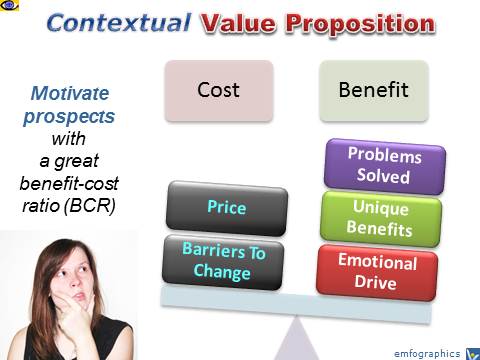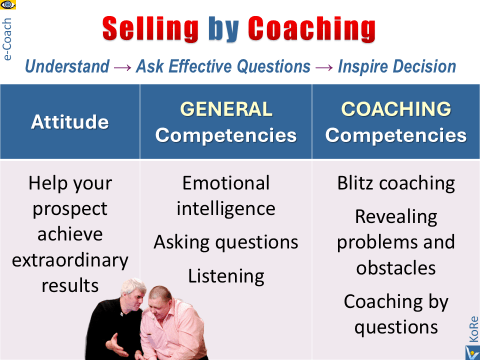|

Understand
Risks Perceived by Consumers
Brainstorm a list of possible objections based on your
product, service or solution.
Consumers may
→
perceive, both
consciously and
subconsciously, many
different types of risks in buying and consuming a product...
More

→
Customer
Value Proposition
→
Virtuoso
Marketing
→
Social Media Marketing:
10 Tips
→
Empathetic
Marketing
→
Emotional
Marketing
|
The Endgame
to Selling
Brian Tracy on overcoming customer skepticism and
gaining commitment
In golf, there is a saying that, "You drive for show,
but you put for dough." In
→
selling, you prospect and present for
show, but you overcome
customer skepticism and gain commitment for
dough. Your ability to answer objections and get the sale is the
true test of how good you really are as a
salesperson.
The true test of
selling
It's where the rubber meets the road.
It's your ability to connect with people and answer the questions that the prospect
puts to you and overcome his natural reluctance to make a commitment
that wraps up the sales process.
Plan it in advance
Plan in advance so that you
are thoroughly prepared to bring the sales conversation to its
natural conclusion at the earliest and most appropriate moment.
Handle objections and
remove the obstacles
Just as there are reasons why people
buy a product, there are reasons why they don't.
>>>
Make it a reason to
buy
Objections can be turned into
reasons for buying. Just as there is a primary reason for buying a
product, a hot button, there is a primary objection that stops the
person from buying it. If you can emphasis the one and remove the
other, the sale falls together naturally.
Use
different
closing tactics for smaller and larger products
In
selling smaller products or services, where you can prospect and
make a complete presentation in the first meeting, your approach to
closing will be different from that required if you are selling
a larger product in a multi-call sale that stretches over several
weeks or months.
>>>
→
Negotiation
DOs and DON'Ts
Ask for the order
In the shorter, smaller sale,
the prospect knows everything necessary to make a buying decision at
the end of
your presentation. Your aim should be to answer any
lingering questions and then ask for the order. In the larger sale,
you may have to meet with the prospect several times before the
prospect is in a position to
make a buying decision. You will have
to be more patient and
persistent.
Action Exercises
Here are two things you can
do immediately to put these ideas into
action.
First, prepare yourself in
advance for the endgame of selling by
anticipating anything the customer might
offer as a reason for not buying. Be ready.
Second, look for the hot
button, the reason the customer will buy, and press it. Meanwhile, find out his
major reason for not buying and remove it.
→
Selling Is
Problem Solving
→
Sell
Benefits
|